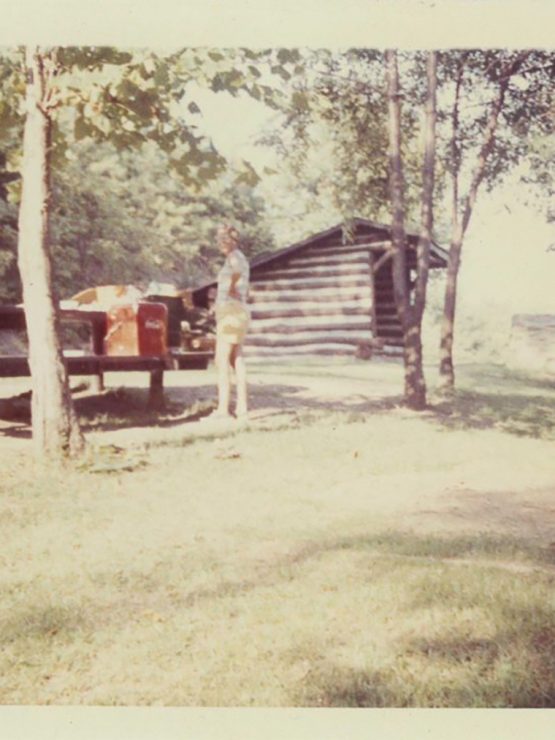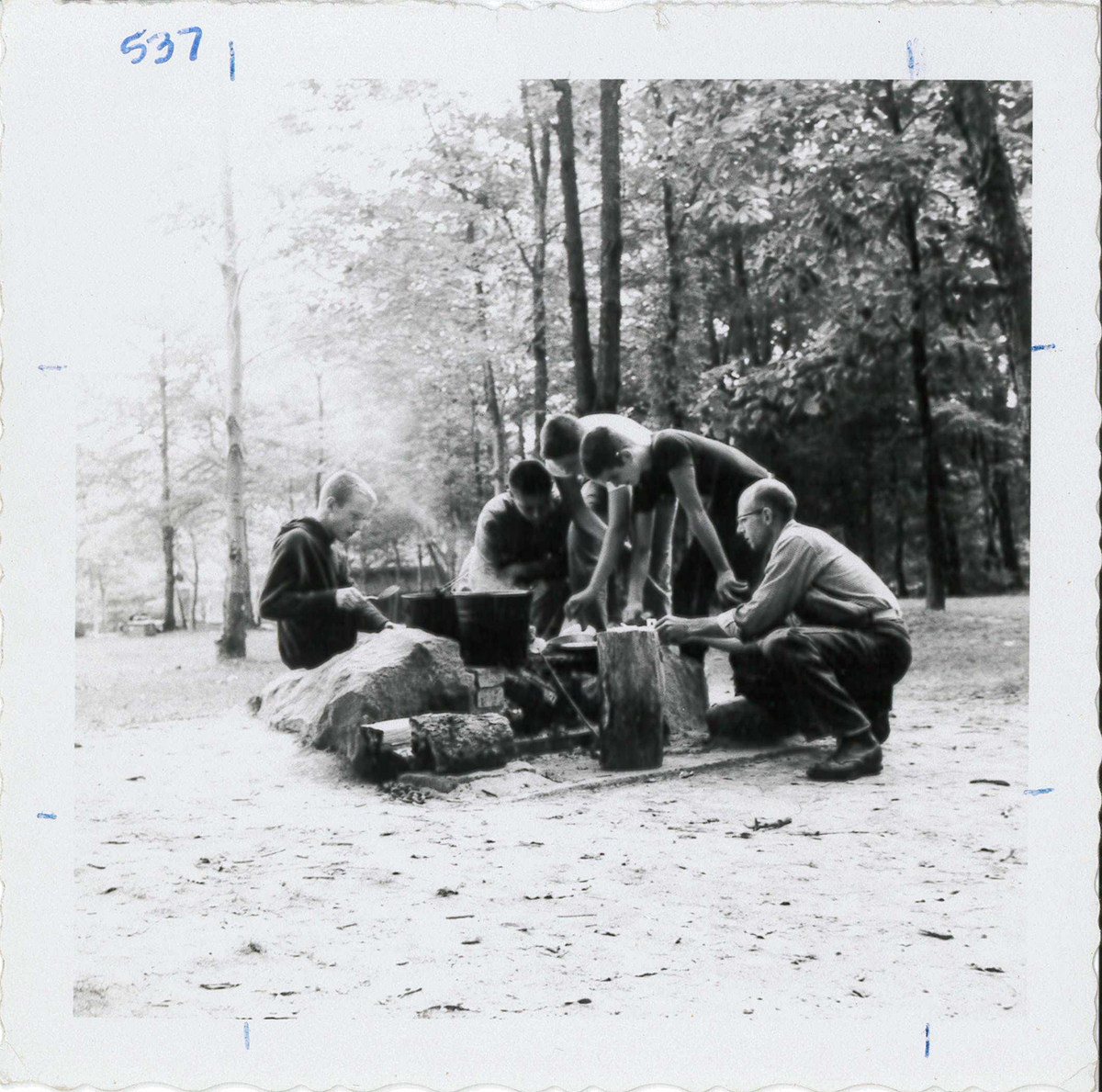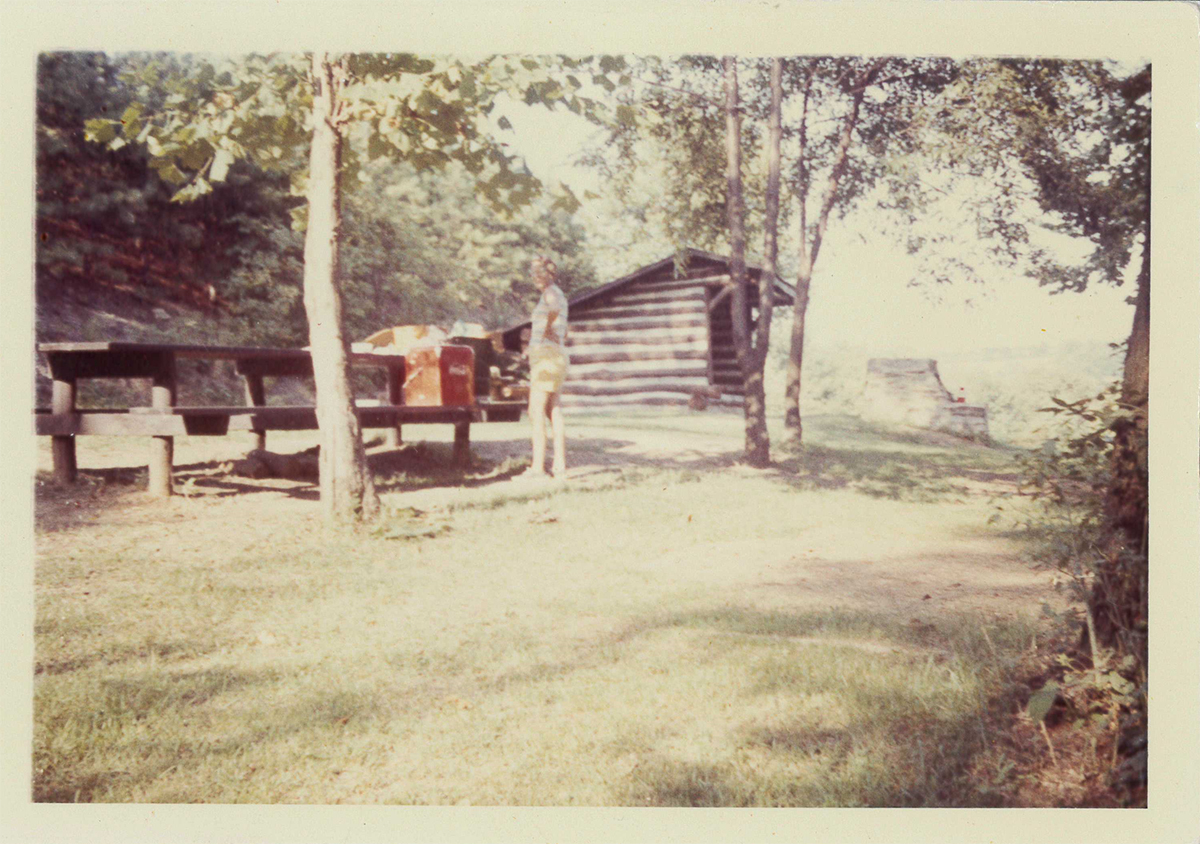This is part one in a series about the making of Meadowcroft. Read part two and part three.
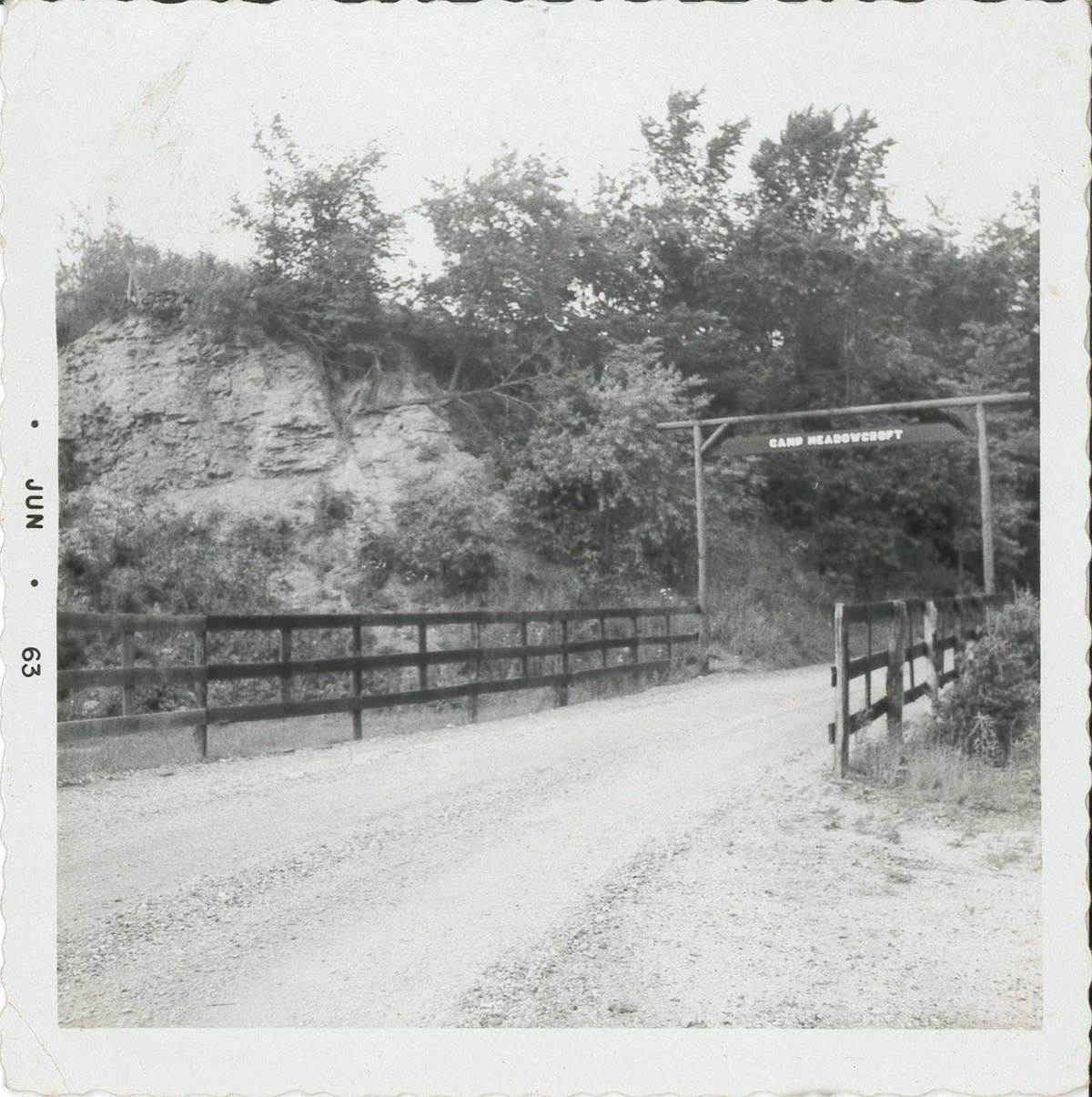
On May 5, Meadowcroft Rockshelter and Historic Village will open for its 50th season. Creating a museum in rural Washington County that has lasted five decades took an enormous effort from Albert and Delvin Miller. Much of the legwork for such a task began with Camp Meadowcroft, which welcomed scouts and groups for overnight visits. The camp, which would eventually become the museum we know today, began as a parcel of coal stripped land.
In 1956, the Jefferson Coal Company told Albert that it would consider selling him the land that the company had purchased from Albert’s grandfather, Thomas Albert Miller, around 1920. Albert thought of a good use for the new land and wrote, “…here is an area in which to develop some type of a recreational setup – perhaps a camp…”
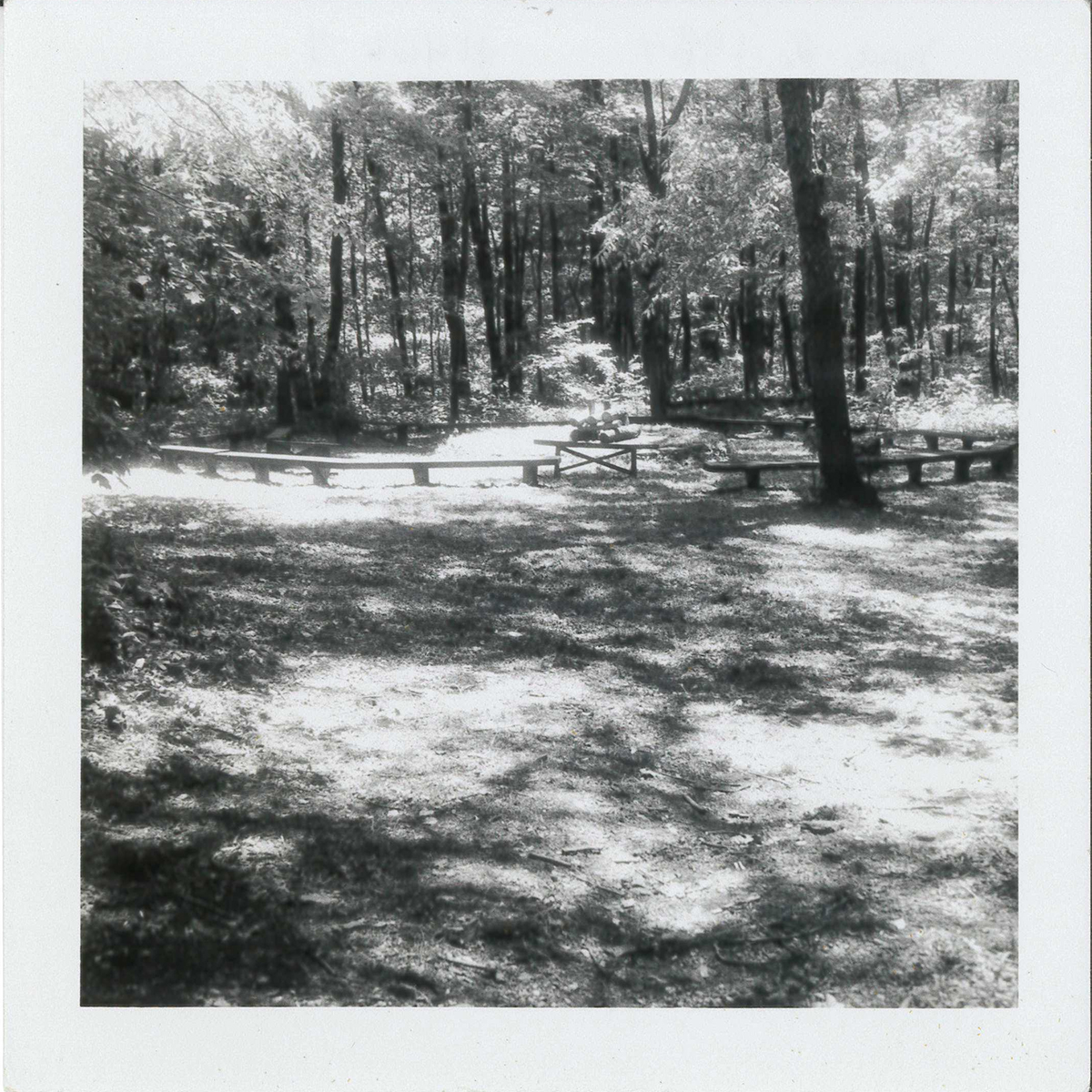
Albert began to develop the land into a camp without his brother’s knowledge. He wanted to have something tangible to show Delvin the site’s potential when he unveiled it to him. To keep it a secret, most of the work in 1956 and ‘57 was done with Albert’s own money and the help of volunteers. Roads were cut to access the camp, the “green” (the grassy area behind the current visitor center) was cleared, a small parking lot was carved out, brush was cut by local scouts to make a campsite, and a campfire circle was created. Finally, On June 9, 1957, Albert drove Delvin around the camp area and wrote that Delvin was “quite enthusiastic about the possibilities of the project.”
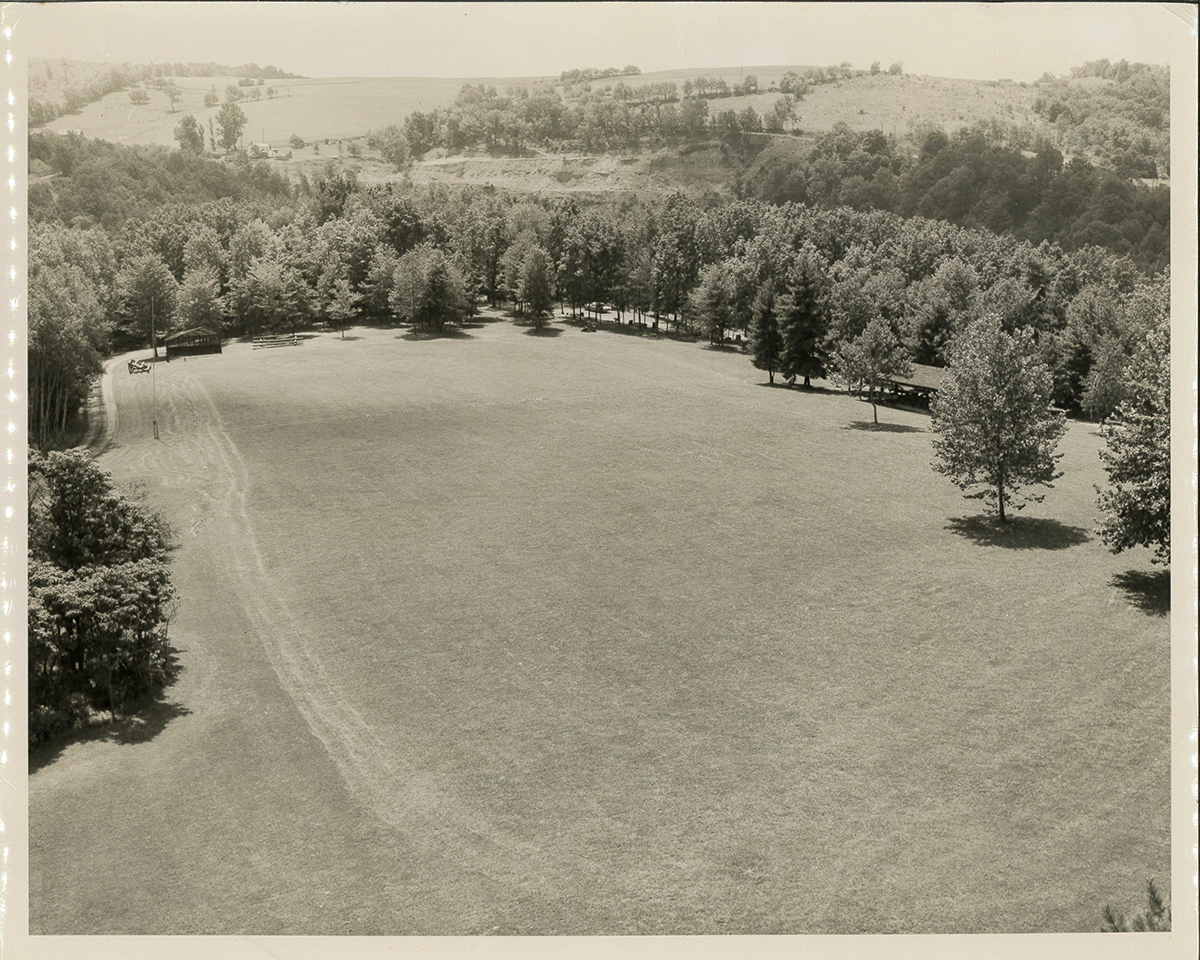
Still, further work was needed to shape the landscape into his vision. The barren slopes were planted, the old mine structures were torn down, and materials were salvaged for use as the camp continued to develop. In 1958, a softball diamond was created on the green behind the current visitor center, and the pond was dug out. The pond was accomplished with the Soil Conservation Society surveying and laying out the area, and two bulldozers worked together to move the earth. In the first half of 1959, Adirondack shelters were built on the ground where the Miller Museum now stands and the pavilion, still used today, was built on the southern side of the green.
On July 28, 1959, the Camp Meadowcroft sign was finally hung up along the entrance road. The name of the camp, and later museum, was taken from combining Bancroft, the family farm, with Meadowlands, Delvin’s farm, to create Meadowcroft. Throughout the late 1950s and into the 1960s, boy and girl scouts, church groups, and schools would camp overnight and tour the site with Albert, but more work would still have to happen before Meadowcroft turned from a camp into a museum.
Meadowcroft opens to the public on May 5, 2018 for its 50th season.
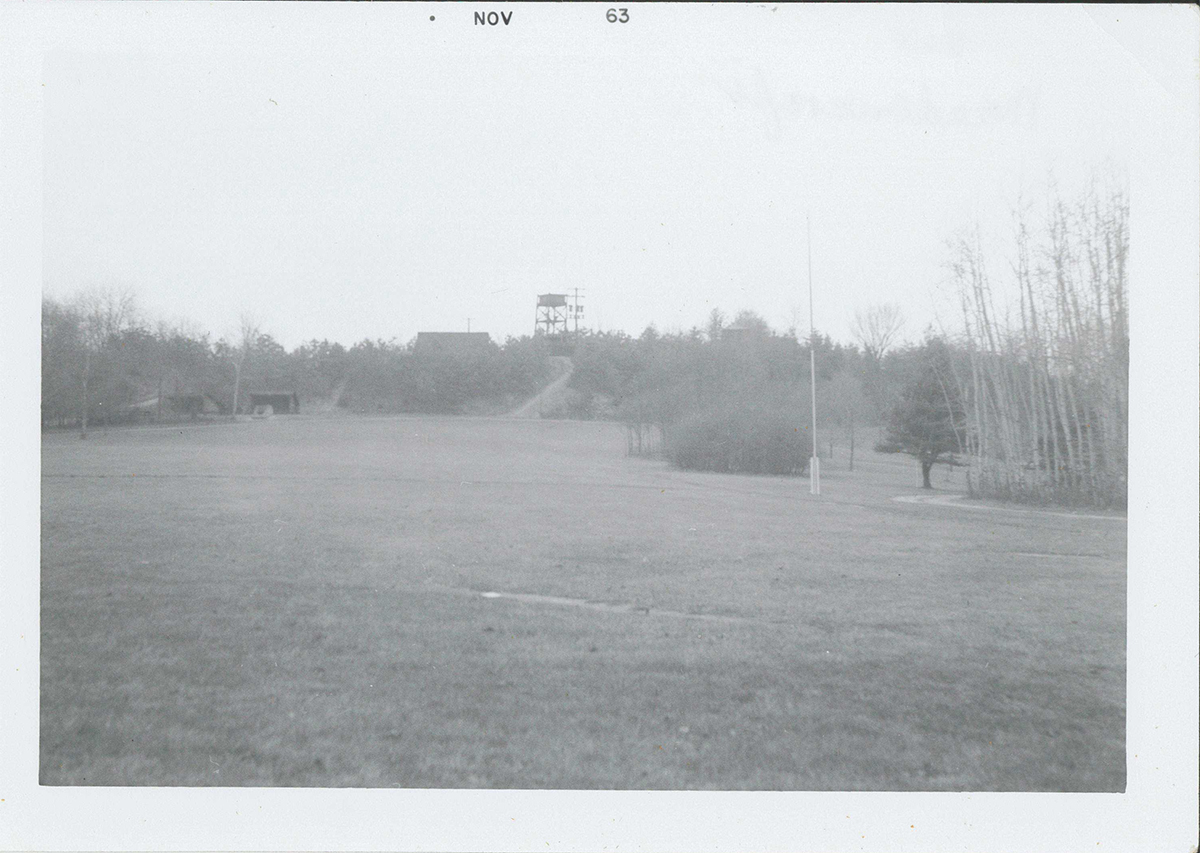
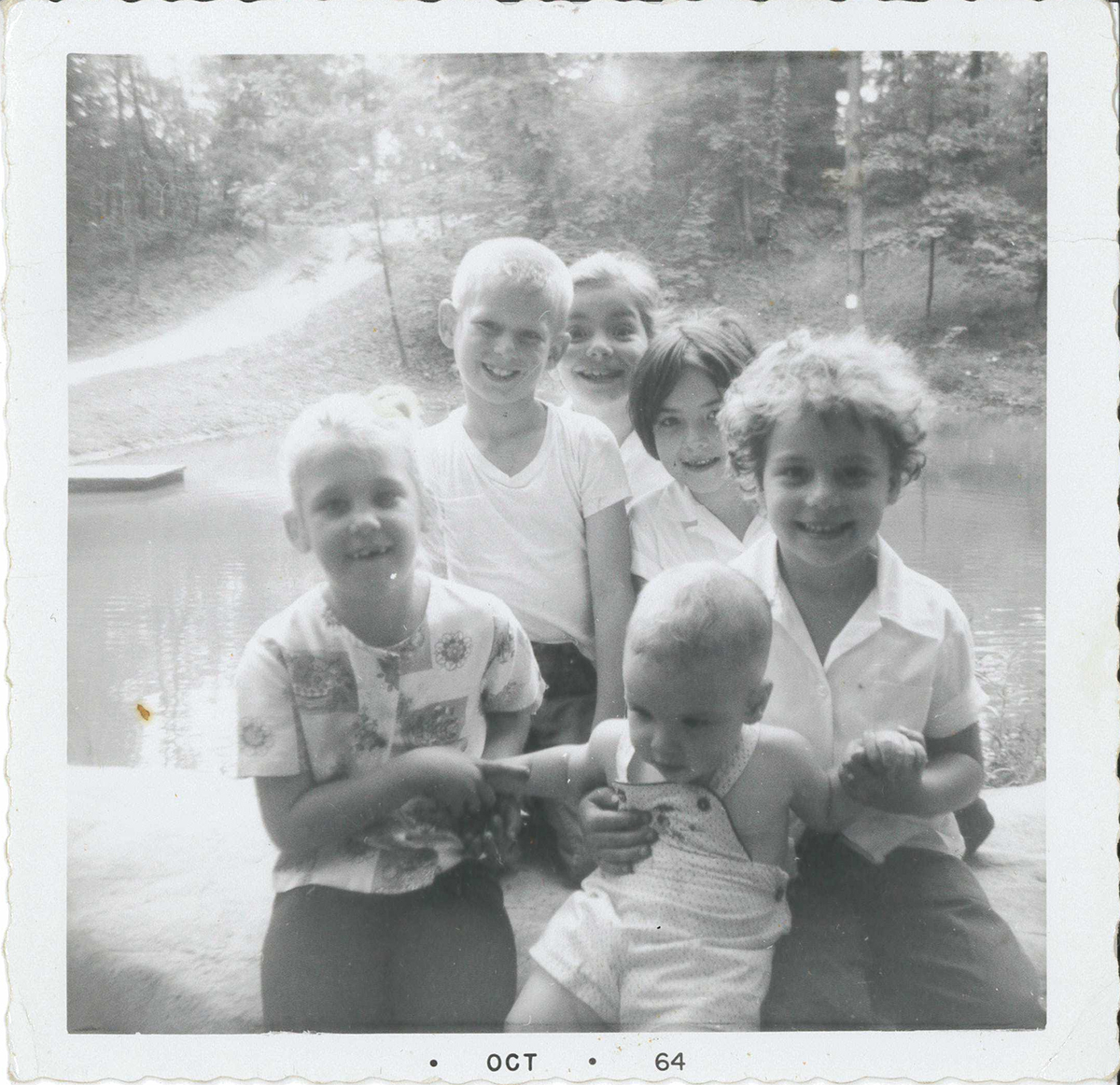
Sources
An invaluable resource to this blog post and the institutional history of Meadowcroft has been a write-up of Albert Miller’s titled “A History of Meadowcroft Village 1956 – 1969” in 1976. This write-up consists of his old diaries and work journals, with added information and recollections to give a more complete picture to the start of the museum.
Albert Miller, “A History of Meadowcroft 1956 – 1969,” July 25, 1976, Albert Miller Papers and Photographs, c. 1890s – 1997, MSS 1095, Series 1, Box 1, Folder 8, Meadowcroft Rockshelter and Historic Village Collection, Detre Library & Archives at the History Center.
